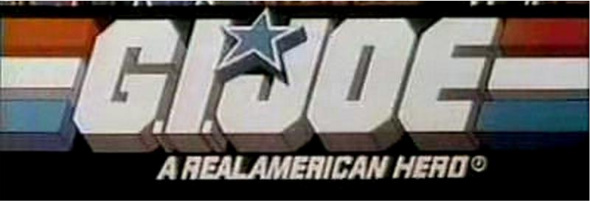There’s quite a few Guilds out there who are always on the lookout for new players to help augment their ranks but are not quite sure how to pull it off. I’m going to assume you have been assigned by your GM to look for more players and that you have no clue how to do it apart from spamming trade. If so, then this column is for you. By the end of this, you should be able to pick up players with no problems at all. Grab yourself a cup of coffee, this is one of my longer pieces.
There are many places a Human Resources officer in a Guild can go to start looking. The first thing is to set up a “Help Wanted ad”. But like any newspaper or wanted ad, you want to specify exactly what spots your Guild needs filled. So before you start looking and posting in trade chat or the WoW recruiting forums, ask yourself the following questions:
What kind of Guild are we? Do we tackle progression raids only? Do I need a position filled on our PvP teams? Figure out the purpose of your Guild before doing anything else.
Next, figure out the role that you need filled. Are we short on healers? Do we need competent spellcasting DPS? Are our Druid tanks stupid with no ideas on how to tank? Once you have that sorted out, narrow it down even further. Of those three categories, which class do you need the most? What class can you use but already have enough of? You may already have 3 Priests and no Paladins but need another healer. You would really like a Holy Paladin or a Restoration Druid, but chances are you will not turn away another Holy Priest if they apply because it fills the need of another healer.
Where is your Guild on progression? Now you need to begin specifying gear requirements. If Conquest was looking for a tank, our needs would be vastly different from a Guild just starting to go into Karazhan. For example, the Canucks would have a different need than the Penguins. For us, the ideal tank should have about X HP or Stamina, Y Defense, with Z Frost or Nature resistance. But a tank looking for a Karazhan group can get away with having less than that.
If your Guild is working on Magtheridon with Gruul down and on farm, then be sure to mention your progression. Going back to our tanking example, you will want to pick up a tank that has done similar encounters with similar experience. Ideally, you don’t want to have to train a tank on an encounter but sometimes it must be done. I understand it is hard to find a perfect player which matches your needs, but it does not hurt to say where you are on progression.
List your raiding times and other requirements. Conquest only raids on Tuesday, Thursday, and Mondays in the evenings. Therefore, it would not make sense to pick up a Warlock who lives in Australia with a 9-5 job. If a person cannot make th time, then they will not bother applying. They don’t waste your time and you don’t waste their time. There might be some software or UI requirements that you should mention. Conquest makes heavy use of Mumble. If you don’t have those two, then you don’t raid with us period.
My old personal policy when I was in charge with recruiting was this: If a player is not willing to follow the simple instructions of downloading and installing an addon or program, how do I know they will obey and follow instructions when it really matters in the raid? I will automatically assume they won’t and immediately write them off. I don’t care if they’re decked out in all T5 or however geared they are because I value a person’s ability to willingly follow instructions over gear they have. Gear can be acquired by any button mashing monkey. But attitude and personality are learned attributes.
Finally, be sure to mention any other quirks or rules that need to be said. Mention any age restrictions or beliefs that you want. I don’t want to go through the effort of having to censor myself or others. I won’t get started on attitudes either.
Creating the Post
Now you create your Guild ad from all the above questions that you have answered. Keep a copy of this at all times somewhere in your computer in Word format or on your Guild recruiting forums for easy access. I’ll write a hypothetical ad about Conquest (Note that we’re not actually hiring).
Server: Ner’Zuhl (West Coast, PvP, PST Server)
Guild Name: Conquest
Website: http://www.nerzhulconquest.com
Raiding Schedule: Monday, Tuesday, Thursday: 6:00PM – 9:30 PM [Note that times are subject to change]
Faction: Alliance
Progress: 5/12 Tier 11 on 25 normal
What our Guild can offer:
- A relaxed and fun raiding environment
- A competitive rated BG team
- A diverse group of players to engage in activities with
- Mumble
Ideal Candidates:
- Are mature, over 16 years
- Possess a working microphone and are not afraid to use it
- Possess a stable internet connection and a raid capable computer that will not explode
- Skilled Player: Skilled in the class that you play
- Excellent Attitude: No negativity. A positive personality that synchronizes with the rest of the guild is an asset
UI Requirements:
Omen
Some boss timers: DXE, DBM or Bigwigs
Once again, contacts: Send in game messages to Matticus on Ner’Zuhl. Alternatively, you can create an account on the website, and use our recruiting form
Now that you have your template post made, the time has come to focus on the real work of actively looking for players. There’s three different ways to go about finding the players you want:
WoW Forums
Yes, the WoW forums are a mess but it still does not mean a lot of players don’t use it. There are two boards interest: Guild Recruitment Forums and your Realm Forums.
Check your Realm forum first. It would be great to find a player that matches your need wo is already on your server. If not, it’s time to check the Guild Recruitment Forums.
Now the Guild Recruitment Forums are one of the top places I go to in order to pick up players. Still have that ad handy? Good, keep it in your clipboard (Ctrl + C). If players are smart, their topic will contain their faction, name, class, realm, and server type. When I started doing this, I sifted through the first ten pages. Everything after page 10, I safely assumed that player had already found a guild otherwise it would have been bumped up to page 1 or 2 by now. Take the time to click on posters of interest and read their own application. Compare it to your shopping list and see if there are any similarities. Scroll down the reply list and see if the original poster has responded to any of the Guild requests or he’s withdrawn his WoW Resume.
If he has, press the back button and continue sifting through the pages and repeat the process.
If he’s still a free agent or has made no signs showing that he’s signed with a Guild, then post your ad, press back and continue sifting anyway.
Here’s how you can bring your Guild to the top of his list:
If that player has posted additional contact information, use it. Send that person an email or add him on to your MSN list. Want to take it a step further? Make a new character on that player’s server and try to send him a tell. If he’s not online, make sure you rolled a mage or warlock, kill a few boars, and send him an in game mail saying Hi and leaving him your contact information saying that you are very much interested in speaking with him.
If you’re an Alliance Guild, I recommend rolling a Human because Stormwind is so close. Im unsure about the Horde side. Undead perhaps?
Why would you do this? Why go through all this trouble for a player?
Chances are, there are a lot of Guilds vying for that player. Make every effort you can to get noticed. The key is to attract his attention. Player’s are not likely to apply unless they know you exist. But on the other hand, if you show initiative, I think most players would be flattered. At the very least, you will be noticed first. Think abut it for a second. If you’re jobless and you get a call from a company asking you for an interview, wouldn’t you be excited? I know I would be. A Guild isn’t so different from a business after all.
Recruiting within the game
The next method is ingame recruiting. Post a message in trade chat outlining your needs but be sure to cut out the stuff you don’t need. You want to include the class you’re looking for, your progression, and your website. I personally believe raiding Guilds need to have websites so they can maintain a presence of some sort and remain competitive if they need to recruit. I don’t know how else to explain it. There’s just a sense of professionalism between Guilds with a site and a Guild without. Anyways, the reason I said post in trade chat is because th Guild Recruiting Channel isn’t automatically joined by players who are already in Guilds. If a player is interested, they should theoretically message you asking for details.
Here’s an example of an in game ad that I use:
[Level 9] LF to join! Raids are Mon, Tue, Th,6 – 930 PM. Rated BGs Wed, Fri and weekends. Visit our new site – nerzhulconquest.com 1/12 25 man, 2/12 10 man PST for details/questions. All classes may apply.
Running instances
The last method is the most tiring but allows you to evaluate the individual skill of a player. At the end of the run, let the other players know that your huild is recruiting. If they have any friends who are interested, tell them to send them your way. With any luck, they will pass the information on to their friends and you will have skirted the unethical practice of poaching players from other guilds. You’ve indirectly said to tem that you are recruiting. If they’re impressed with you and your guild, they’ll check you out. You cannot get accused of stealing players because thy did it voluntarily, right? After all, it is not like you directly said to them “Hey, our guild’s doing this and we need players. Interested?” But alas, that is a discussion for another time. The point is to generate player interest via word of mouth.
Now that you have a solid set of applicants, the time has come for the interview process. This can either be done in game or on a voice server. I generally prefer ventrilo. I like to hear a person and listen to how they answer my questions. If you’re speaking to a player off server, it is absolutely doubly important since transferring characters is not cheap. Ask them a question even if it’s already been answered by tem in their application or such. If there is a discrepancy between answers, alarm bells should be going off in your head and you need to make sure it’s clarified. If he posts one thing and says another, be sure to follow up on it. Here’s a few sample questions that you can ask:
What’s your raiding experience?
When are you able to raid?
What kind of gear do you have? (With Armory open)
Do you know anyone in the Guild?
Why did you pick our Guild?
What are your professions?
Do you have any questions?
The last question is important because you want to give that player an opening to help dispel his or her concerns. Such topics may include loot distribution, raiding frequency (backup or starting raider), etc. It would suck for a player to transfer and then immediately regret it. It’s just common courtesy. The point here is to ensure that the Guild is a good fit for the player and vice versa. If he aces your interview and you think he is a good fit, then tell him to transfer and sign him immediately.
If not, and here is were I find things interesting, then just let him know. For some reason, there are people who exist who do not seem able to or are unwilling to say no. Jut tell them that “Sorry, you don’t match what we’re looking for in a player. Good luck to you!”
There you have it. A start to finish guide on how to pick up and recruit players. I hope my experience as a recruiting officer helps and hopefully you’ll pick up the players you need to succeed in higher end content. Now get back to raiding!






